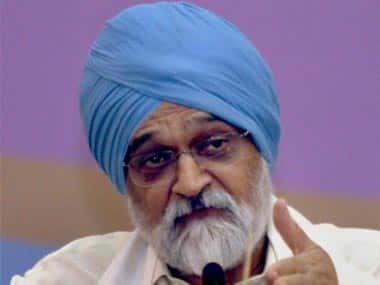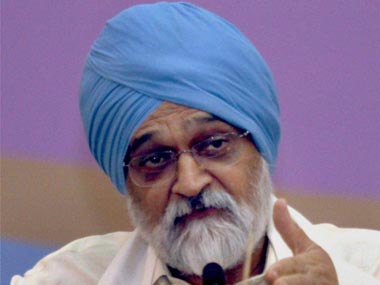Journalist Sainath picking on Montek Singh Ahluwalia in his article austerity of the affluent in The Hindu, the latter’s rejoinder to the references on him, and the author’s reply together offer a rare glimpse of the profligate world of planning and poverty alleviation.
Rs 26 a day poverty-line for the millions of destitutes of the country, but business-class travel, luxury hotels and vintage wine and cheese for those who are dedicated to the service of the poor.
[caption id=“attachment_321388” align=“alignleft” width=“380” caption=“PTI”]
 [/caption]
[/caption]
Sainath argued, based on RTI information obtained by other journalists, how massive the overseas travel expenses of Montek, who is otherwise known for his ridiculous justification of the poverty-line argument, were. The highlight of Sainath’s article was that the average daily expense of this star planner was Rs. 2.02 lakhs during his overseas travel between May and October last year.
Using Montek’s own Rs 26 a day calculation, this could have sustained a poor person in rural India for more than 20 years!
More startling was Montek’s rejoinder. He hasn’t contested any of the facts that Sainath has raised. Instead, he took refuge in the standard entitlements of a public servant of his stature; and that most of his travel was not as Deputy Chairman of the Planning Commission but as the sherpa of G-20 and as part of the Prime Minister’s delegation.
In other words, he justifies that it indeed takes Rs 2.02 lakhs a day to sustain him when he is travelling abroad for the sake of his country.
Since there was no word on who footed the bills, one should assume that it was the poor tax payer who underwrote this profligacy.
Montek’s arguments are not different from what one hears in the international development circuit: business class travel inevitable to ensure that one gets to work as soon as one lands in Geneva or New York; five star hotels for the basic comforts as well as to host important people; and substantial per-diems for out-of-pocket expenses such as laundry.
To be fair to Montek, this is nothing unusual. Most of the jet-setting development-planners also complain of 14-hour work schedules, back-to-back meetings and negotiations, official dinners and lunches; and their inability to take a day off to see the great wall of China or the pyramid in Egypt. But the question remains whether the lead of the planning commission whose aim it is to reduce poverty should be wasting money.
Of course, It’s all in the service of the poor, whether the country one serves is a forever-emerging super-power such as India or a basket-case such as Bangladesh. Entitlements of the top level planning specialists do not change.
Perhaps this is one of the reasons why many IMF, WB and UN employees eye plum public posts in governments towards the end of their careers. Institutions such as planning commission are their favourites. And there is a market for them, particularly in poor countries because the governments want people with the lingo and exposure as negotiators.
Some get hired as ministers (eg Maldives, India, Pakistan) while some as technical advisors to the Presidents and Prime Ministers (eg India, Liberia, Nepal, Bangladesh). Many also get to be deputy heads of central banks (e.g. Nepal) and planning commissions (eg India). Some keep the affectation of the accent they acquired in Washington DC intact even after 20 years, while some let it wear off sooner or later.
Sainath’s article points to the general lack of ethics in spending public money.
RTI queries should seek further information on the amount of consultancy fees that the government pays while negotiating international loans or implementing development projects. Besides the string of conditionalities, international aid; whether it is a repayable loan from World Bank or ADB or a pittance of a grant from USAID; usually comes with a roster of consultants with big (usually $500 per day or above) price tags.
Is there another way to serve the poor? Take a took at Dr Paul Farmer’s work in Boston, Haiti, Russia, Cuba and Peru.
)